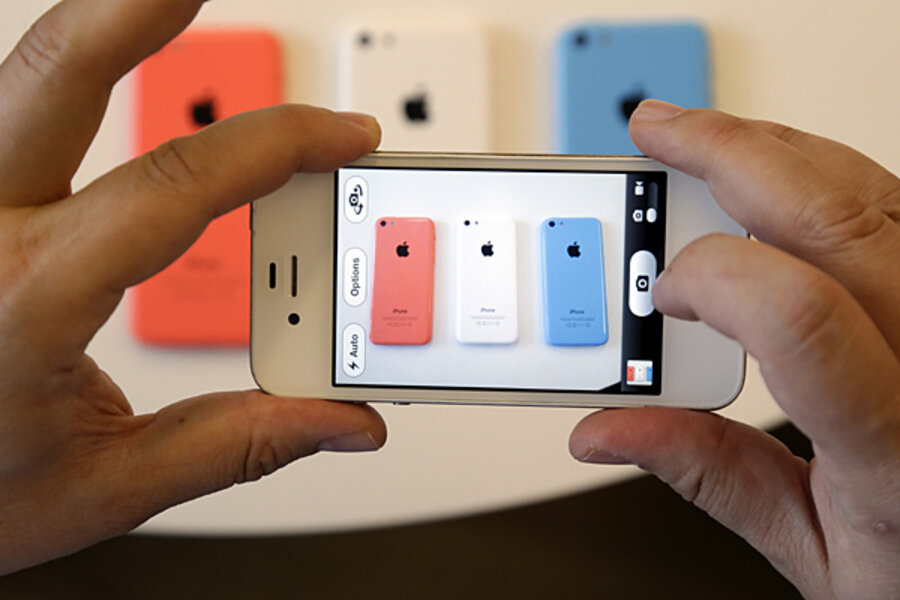Tough start for iPhone 5C, but traction may be building
Loading...
On the Monday after iPhone pre-orders begin, the tech world is usually buzzing about Apple’s record-breaking sales.
But this week, the buzz is noticeably missing. Apple has yet to release the pre-order numbers on the iPhone 5C, and has yet to announce when those numbers will be available. That hasn’t stopped analysts from projecting the pre-order numbers and looking at other factors that may hint at what sales are likely to look like, in the United States and beyond.
For the past three releases of the iPhone, Apple has announced the pre-order numbers for the first 24 hours of sales on the Monday after the pre-order starts. This year, not so. Analysts, however, project that sales are not bad, but not record-breaking. CNET reports that Piper Jaffray analyst Gene Munster believes the number is likely around 1 million. That number is half the amount of iPhone 5 units that sold on the first day last year.
This may seem like reason for Apple to worry, but since Apple released two new models, the options for upgrades could be splitting consumers between Team 5C and Team 5S, accounting for lower pre-order numbers. In addition, the 5C is the only device available for pre-order at the moment, which means that people who want the 5S will have to camp out to buy one in the store on Sept. 20. Mr. Munster also added in his report that consumers are slowly warming up to the idea of the 5C, based on research done through Twitter.
"We believe people who followed tech closely and were interested in the announcement panned the 5C since it had minimal changes from the 5, but as more normal people became involved in the conversation, it appears that color matters to consumers and the 5C could be more popular among the total consumer base than some may have expected," Munster wrote.
In China, which has been a market many have followed after the 5C release, news has been both good and bad for Apple. Business Insider reports that carrier China Unicom announced 100,000 pre-orders of the phone. This may not seem like an impressive figure, but the company (the second-largest phone company in China) has not released pricing yet and this does not include numbers projected for iPhone 5S purchases. On the other hand, according to the Wall Street Journal, China Telecom (the third-largest carrier in China) announced it would be cutting subsidies on the iPhone. In other words, the iPhone will continue to be more expensive for the Chinese, even if customers buy the phone through a two-year contract, as most Americans do. On Wednesday, China Mobile, the largest phone carrier in the country approved Apple devices on its carrier, but there is no word on pricing yet.
Though sales may seem to have gotten off to a rocky start, analysts predict the iPhone 5C could be Apple’s big seller by the end of the year. Taiwanese publication DigiTimes reported that industry sources confirmed more than 30 million iPhone 5C panel devices would be shipped in the fourth quarter, signaling Apple’s optimism about the device.
As of now, the Apple 5C is still available for pre-order. Last year, the iPhone 5 pre-order sold out in one hour.






